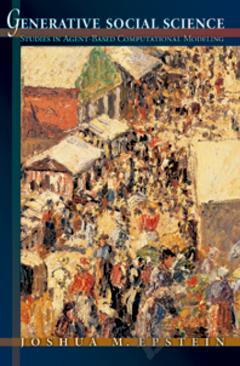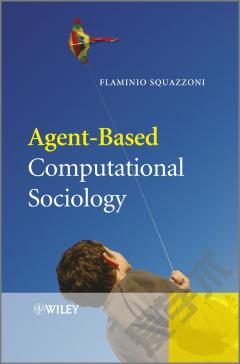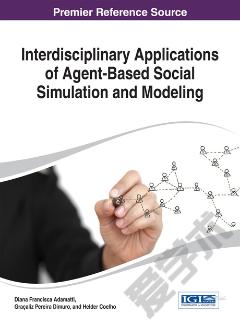Generative Social Science —— Studies in Agent-Based Computational Modeling
----- 生成型社会科学:基于代理的计算模型研究
Generative Social Science: Studies in Agent-Based Computational Modeling JOSHUA M. EPSTEIN PRINCETON UNIVERSITY PRESS, PRINCETON, NJ, 2007 352 PP. CLOTH $49.50 REVIEWED BY ERIC C. JONES This book calls for a generative social science. Generative social science rests on the idea that you cannot explain current phenomena without describing the rules or preceding conditions that produced these current phenomena. In other words, the author believes that we must not only explore causality in terms of 'A affects B,' but also in terms of how a specific suite of physical, biological, social or cultural tendencies play out across time for a given population, producing some observed state or phenomenon. Epstein argues that anything short of being able to model the flow between prior and present conditions is mere description. He says his naming of the Generative approach took inspiration from Chomsky's generative syntactic structures. Generative social science is tightly wed to the methodology of Agent-Based Modeling made more feasible lately by faster computers. However, Epstein warns against its identification solely as a computer-driven technique. His point is that past behavior of individuals, households, firms or other agents must be accounted for when understanding a phenomenon. Following the lead of mathematicians and most modelers, the author seeks parsimonious or small sets of rules to explain the arrival at any current condition. This 'new' kind of social science is probably too mathematical for most ethnographically oriented social scientists to adopt, although this historicist/ evolutionary approach is one that must regularly be injected into the social sciences in order to augment the complimentary yet more dominant functionalist and ideationist approaches. Ecosystem researchers would certainly be able to make use of the agentbased modeling approach, perhaps even being able to better account for the individual agents in their systems. Population researchers similarly could better develop models and parameters for animal/plant/ agent behaviors. Generative Social Science is generally an update to the 1996 book Growing Artificial Societies (Brookings Institution and MIT Press) by Epstein and Robert Axtell, although this new book is a compilation of works with all but three chapters (Introduction, Chapters 2 and 13) published separately elsewhere in books or journals. Preludes by Epstein for each chapter make the flow awkward, but provide contextual insights or connections between chapters. All chapters have Epstein as an author-typically the primary author-and half of the chapters are single-authored by Epstein; as such, the publisher considers the book a single-authored work. A CD with several of the models accompanies the book, so that you can change a few of the parameters and graphically view the results (hundreds of colored pixels on a square space). The agent-based modeling technique is one way to bridge the micro-macro gulf, producing non-intuitive macro results along the way. Epstein is careful to define such emergence as the computable result of agent actions, and not as the old (and even contemporary, in some cases) idea of emergence as something that can never be reduced to its parts. Despite proposing this form of reductionism, the book allows that emergent properties maybe something that the individuals themselves might not possess, so emergence is not so much a sum of parts as a product of parts. Different agent-based models with different suites of variables might produce the same social phenomena, in which case field data and theoretical plausibility assist in determining which model to pursue. Models can also be used to find out which rules will not account for observed behavior. The first three chapters constitute the introductory material, primarily advocacy for the approach as well as delimiting the domain. The domain of generative social science is based upon the following: heterogeneous agents, bounded rationality, explicit/ geographic space, local interactions, non-equilibrium dynamics and initial autonomy of agents. â¦
{{comment.content}}








 京公网安备 11010802027623号
京公网安备 11010802027623号